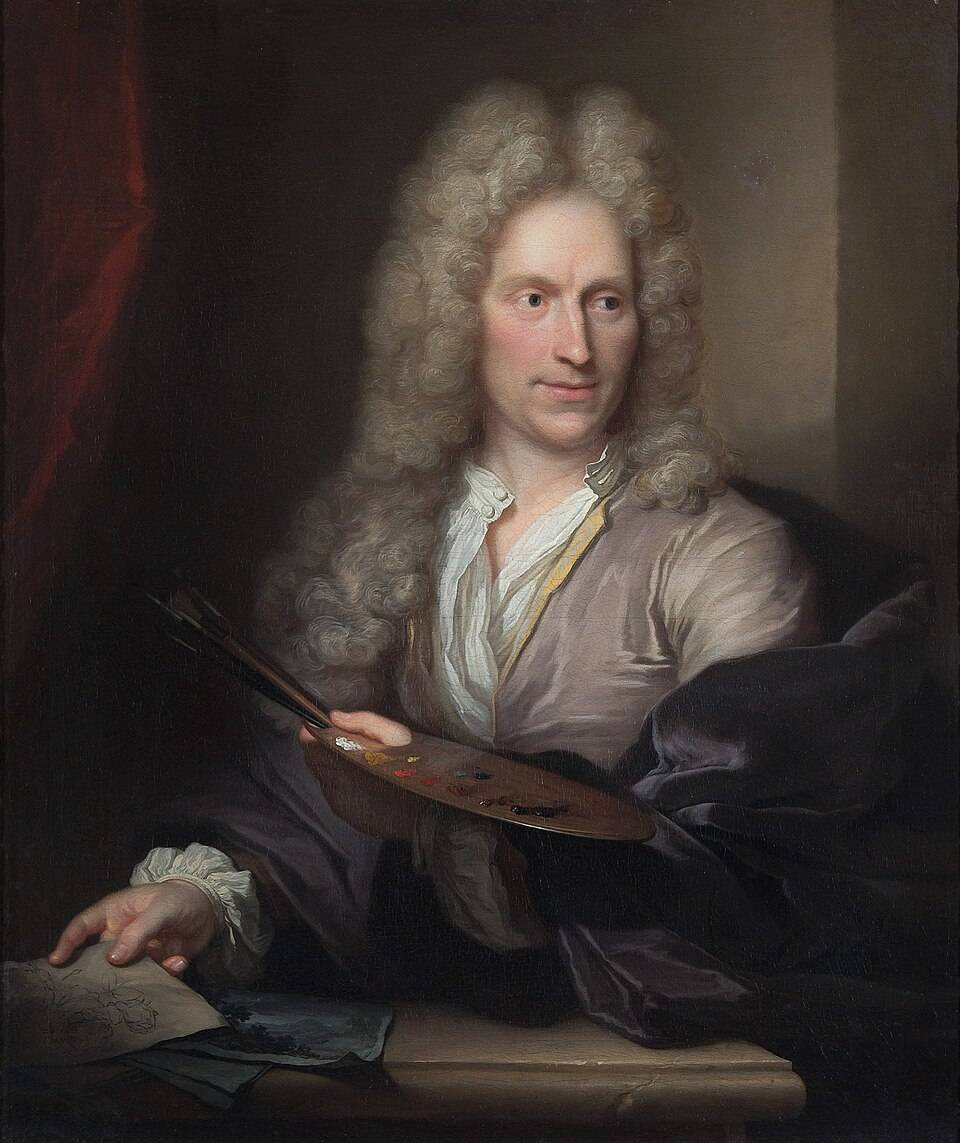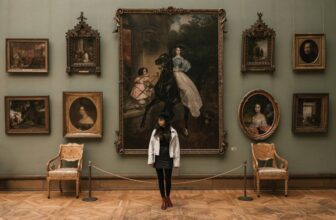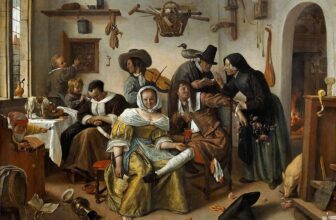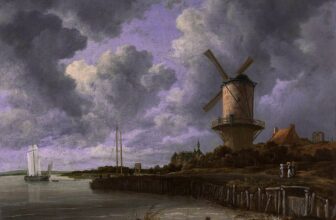
Jan van Huysum’s Timeless Botanical World
Jan van Huysum (1682–1749) stands as one of the most celebrated still-life painters of the Dutch Golden Age. Known as the “Apollo of Flower Painters,” van Huysum revolutionized floral art with his extraordinary attention to detail, luminous compositions, and delicate handling of color and light. His paintings transformed flowers from simple decorative motifs into complex expressions of life, transience, and artistic perfection.
In this deep dive, we’ll explore Jan van Huysum’s most iconic works, the botanical world he created, his artistic secrets, and the hidden meanings behind his flower paintings, and understand how he defined Dutch floral art for centuries to come.
The Life and Legacy of Jan van Huysum
Born in Amsterdam in 1682, Jan van Huysum was the son of Justus van Huysum, a painter known for still lifes and decorative works. Growing up in a family of artists, Jan was surrounded by brushes, pigments, and canvases from an early age. Yet, he quickly surpassed his father and contemporaries, forging a distinct path that blended scientific observation with poetic imagination.
While most Dutch painters of the 17th century were captivated by grand biblical or historical narratives, van Huysum turned his attention to the humble beauty of flowers and fruit. He studied them not merely as botanical subjects but as living organisms, capturing their bloom, decay, and delicate interplay of light and shadow.
Van Huysum worked in secrecy, rarely allowing visitors into his studio. He kept his painting techniques hidden, and even his assistants were forbidden from observing his process. This aura of mystery added to his legend and left later generations of artists and art historians speculating about his unique methods.
Jan van Huysum’s Most Iconic Works
Over his lifetime, van Huysum produced around 200 paintings, most of which depicted flowers and fruits. Each work radiates an almost impossible level of perfection, colors that seem to glow from within, dew drops that glisten with realism, and arrangements that appear both natural and meticulously composed.
Here are a few of his most iconic masterpieces:
1. “Vase of Flowers” (1722–1723, National Gallery, London)
This painting is perhaps his most famous creation. The “Vase of Flowers” presents a sumptuous bouquet of tulips, roses, poppies, carnations, and morning glories cascading from a stone vase. Every petal is rendered with lifelike precision. The bouquet sits against a dark background, heightening the brilliance of the blooms. Van Huysum’s attention to the reflection of light on the petals and glass is a hallmark of his style.
This painting exemplifies his ability to merge realism with idealization, no single bouquet could ever exist as depicted, since the flowers bloom in different seasons. Yet van Huysum brought them together into a timeless vision of beauty.
2. “Fruit Piece” (c. 1725, Rijksmuseum, Amsterdam)
In this painting, an abundant arrangement of grapes, peaches, figs, and plums is displayed with astonishing luminosity. The artist’s rendering of texture, the bloom on the grapes, the fuzz of the peach, the translucence of the cut fruit, creates a feast for the eyes. The composition balances light and dark tones perfectly, illustrating van Huysum’s mastery of color harmony.
3. “Flowers in a Terracotta Vase” (1736, National Gallery, London)
This painting features a terracotta vase adorned with a classical relief, overflowing with flowers of all kinds. The addition of insects, butterflies, and a lizard enhances the lifelike quality of the scene, while subtle hints of decay, fallen petals and browning leaves, suggest the passage of time.
This work demonstrates how van Huysum infused his paintings with symbolism about life’s fleeting beauty, a theme deeply rooted in the Dutch Vanitas tradition.
4. “Bouquet of Flowers in an Urn” (1730s, Louvre Museum, Paris)
This grand composition displays his fully matured style. Every bloom seems to float in soft, diffused light. The urn sits on a marble ledge, and the background transitions into a gentle landscape, blending still life with atmospheric depth, a technique that set him apart from other still-life painters.
The Botanical World of Jan van Huysum
Jan van Huysum’s art cannot be separated from the botanical revolution of his time. The 17th and 18th centuries saw a surge in scientific interest in plants, gardens, and exotic species, fueled by Dutch global trade and exploration. Wealthy patrons cultivated exotic gardens, and botanical illustration flourished alongside painting.
Van Huysum was not merely a painter but a keen botanist and observer of nature. He collected rare flowers, studied their anatomy, and often painted from life. His floral arrangements include tulips from Turkey, roses from France, lilies from Italy, and exotic blooms from Asia, species that symbolized global curiosity and wealth.
Unlike earlier Dutch still-life painters, van Huysum broke away from the dark, somber tones of the 17th century. His works shimmer with light, air, and movement. He often depicted his flowers outdoors, allowing soft daylight to filter through petals and leaves. This innovation gave his paintings an unprecedented freshness and vibrancy.
Every element in his compositions, the butterfly resting on a petal, the snail crawling on a vase, the dew droplets, was part of his botanical storytelling. Each insect and flower was accurately observed, yet carefully chosen to balance color, form, and symbolism.
The Artistic Secrets of Jan van Huysum
Van Huysum’s secretive nature has become legendary. He guarded his techniques jealously, to the point of painting alone and locking his studio when he left. Even his closest family members didn’t know the full extent of his methods. Nevertheless, modern scholars and conservators have uncovered several clues about his artistic process.
1. Layering and Glazing Techniques
Van Huysum used extremely fine layers of oil paint, building his compositions slowly. He started with a light, almost transparent ground and applied multiple glazes to achieve his signature luminosity. Each layer was allowed to dry completely before the next was added, producing a glowing, three-dimensional effect that modern imaging techniques still struggle to replicate.
2. Color Innovation
He mixed his pigments with rare oils and resins, creating colors that have remained remarkably fresh for nearly 300 years. His mastery of greens and whites is particularly notable, many earlier artists struggled with these hues, but van Huysum achieved a range of tones that looked both natural and radiant.
3. Composition and Movement
Rather than rigidly symmetrical arrangements, van Huysum introduced dynamic, spiraling compositions. Flowers and leaves twist gracefully toward the light, creating a sense of rhythm and movement. The eye is guided naturally through the painting, from the bright central blooms to the shadowy background.
4. The Play of Light and Transparency
He was fascinated by how light passed through petals and glass. By observing real flowers in daylight, he replicated the subtle translucence of petals and the shimmer of moisture. This gave his works a soft, almost ethereal quality unmatched by his contemporaries.
5. Secrecy and Perfectionism
Van Huysum was a perfectionist who would often spend years on a single painting. His obsession with realism and ideal beauty drove him to study flowers at all stages, blooming, fading, and withering, so he could represent them truthfully. His secrecy wasn’t just about protecting technique; it was about maintaining the mystique of mastery.
The Hidden Messages in Jan van Huysum’s Flower Paintings
While van Huysum’s paintings are breathtakingly beautiful, they also carry deeper symbolic meanings. His work evolved from the Dutch Vanitas tradition, in which still lifes reminded viewers of the transience of life and the futility of earthly pleasures.
1. The Fleeting Nature of Beauty
The flowers, though vibrant, are already beginning to wilt. A fallen petal, a curling leaf, or an insect nibbling on a bloom all serve as memento mori, reminders that beauty and life are temporary.
2. Harmony Between Nature and Art
Van Huysum’s paintings also celebrate the human capacity to preserve beauty through art. While real flowers fade, his painted ones live forever, suggesting art’s triumph over time.
3. Spiritual Symbolism
Some of his compositions contain subtle Christian symbolism, white lilies for purity, roses for love, poppies for sleep and death. The combination of blooming and decaying flowers reflects the cycle of life, death, and rebirth.
4. The Enlightenment Ideal
In the 18th century, as the Enlightenment spread through Europe, van Huysum’s meticulous realism resonated with the scientific spirit of the age. His work celebrated observation, knowledge, and the beauty of the natural world, a visual embodiment of intellectual curiosity and human progress.
How Jan van Huysum Defined Dutch Floral Art
Before Jan van Huysum, floral still life was already a beloved genre in the Netherlands, perfected by painters like Rachel Ruysch, Willem van Aelst, and Jan Davidsz de Heem. Yet van Huysum pushed the form to new artistic and technical heights.
1. From Darkness to Light
Earlier Dutch still lifes were characterized by dark backgrounds and dramatic contrasts. Van Huysum replaced these with bright, luminous palettes, often setting his bouquets in open air with glowing skies. This innovation made his works feel alive and modern, influencing generations of European painters.
2. Integration of Landscape and Still Life
He often included glimpses of landscapes or architectural elements in his compositions, blending genres in a way that foreshadowed later Romantic art. This combination created depth and atmosphere, turning still life into a window onto the world.
3. Influence on Future Artists
Van Huysum’s influence extended far beyond his lifetime. 19th-century artists such as Henri Fantin-Latour, and even 20th-century painters like Georgia O’Keeffe, drew inspiration from his devotion to nature’s detail and his ability to find emotion in the structure of flowers.
His paintings became prized possessions of European royalty and collectors. The Grand Duke of Tuscany, the King of Prussia, and the Empress of Austria all sought his work. In 2019, one of his paintings, stolen during World War II, was ceremonially returned to the Uffizi Gallery, a testament to the enduring power and prestige of his art.
The Timeless Appeal of Jan van Huysum
What makes Jan van Huysum’s paintings so timeless is their ability to transcend their era. They appeal to both the intellect and the senses, uniting scientific precision with emotional beauty. His art is not just about flowers; it’s about life itself, its fragility, brilliance, and impermanence.
In today’s world, where art often leans toward abstraction and concept, van Huysum’s works remind us of the simple yet profound beauty of nature. His paintings continue to inspire not only art historians and collectors but also designers, photographers, and botanists.
The Enduring Genius of Jan van Huysum
Jan van Huysum redefined what still life could be. Through his delicate brushwork, technical genius, and philosophical depth, he turned bouquets into universal symbols of human experience. His botanical world remains unparalleled, a place where light dances on petals, where every leaf tells a story, and where beauty becomes eternal through art.
He once said little about his process, but his paintings speak volumes. They reveal a man who saw nature not just as a subject but as a mirror of existence, fragile, radiant, and endlessly renewing.
More than two centuries later, Jan van Huysum’s flowers still bloom, whispering the same message:
Life is fleeting, but art endures.




